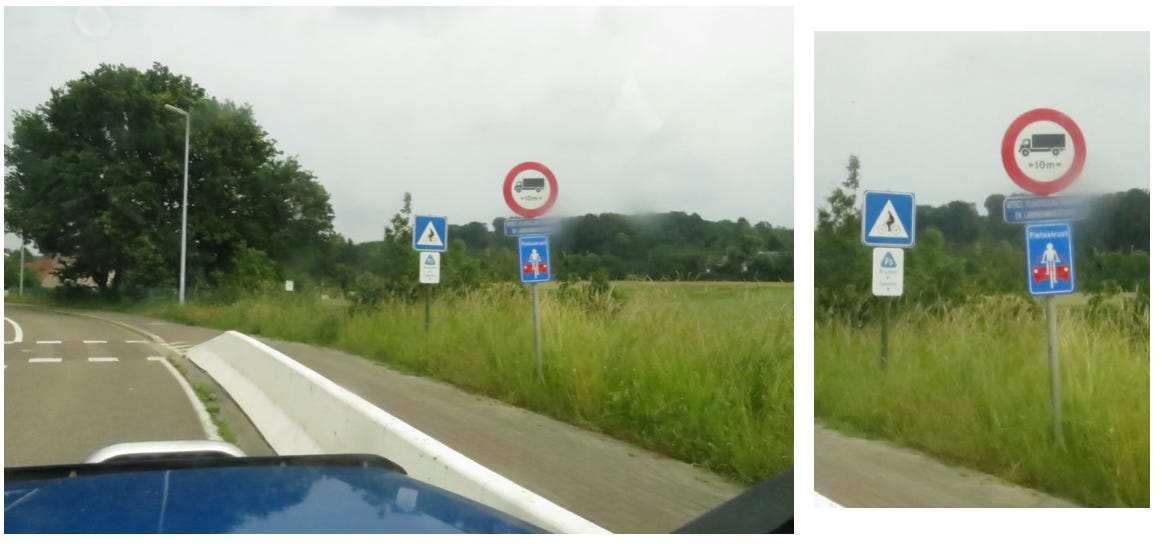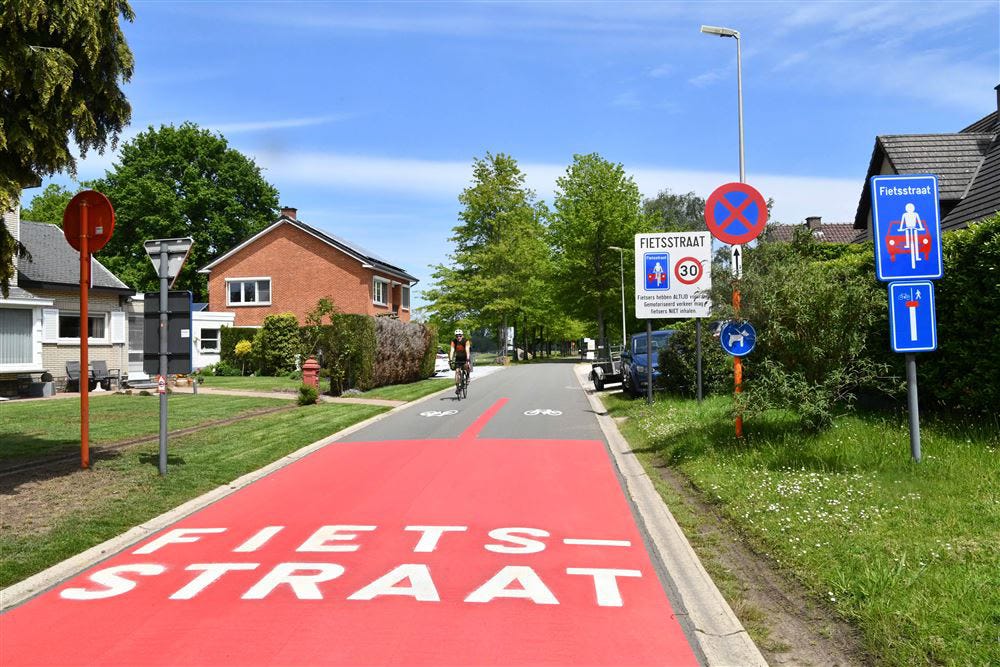Click above to hear this article as section 564 of the Highway Code
The Portland transportation authority in Oregon, USA, has put in some bike lanes that it authorised two years ago. That has to be a good thing, doesn’t it? Well, local residents are surprised, to say the least because they allege that they were not duly consulted about the matter. The bicycle lanes simply appeared as if brought by the fairies—overnight.
Portland has to be about the most miserable place anyone could want to cycle. It has 333 days of rain a year. Honestly, I reckon if anyone deserves a break, it’s Portland’s cyclists. But, then, again, so do the residents on North-East 33rd Avenue, for they now apparently have nowhere to park their cars.
Upon having their indiscretions pointedly pointed out to them, the authorities then embarked on 25,000 dollars’ worth of work to remove the bicycle lanes, bowing to the breach of their consultation duties, only to then summarily halt the removal works (some speculate that, whatever the results of the consultation would be, they’d simply be repainting the cycle paths anyway).
The authorities’ lack of concern for residents’ feelings (one resident’s own word) is nothing compared to the lack of feeling, for motorists, residents and cyclists alike, in the comments that follow the clip from Fox 12 News on YouTube.
Belgium, a rainy part of the world as well—but not quite so much so as Portland—is much more adult when it comes to its cycling facilities. A few years back, my local authority designated my own street as part of a fietsautosnelweg, and even gave it a number: F3.
Autosnelweg is one of those Dutch words known as composite nouns. It is made up of three parts: weg, which is a way, or road; snel, which means fast, rapid; and auto, which means car, automobile. Put those all together and you get the Dutch word for a motorway (or freeway in the U.S.). By adding onto the front the word fiets (which means cycle) we get cycle motorway. And that is actually a contradiction in terms, isn’t it? How can a cycleway be a motorway? Whatever, that’s what it’s called. But the motor bit really is silly. Isn’t it?
When my street was further designated as a fietsstraat, in June 2021, I needed to enquire what that meant. Did that mean that cars are prohibited? I wrote to the council.
So, what, then, is a fietsstraat? Well, it has primarily two effects on motorists and confirms one effect on cyclists:
Motorists may not drive at over 30 kph; and they may under no circumstances pass a cyclist. At all.
Cyclists can, as they can anywhere, do whatever they want and motorists are liable in insurance law for anything that happens to them or their velocipedes.
So, questions, questions, questions:
What’s with the cycle path that covers about 1/4 of the street (and that cost a fortune in hand-laid klinkers to create)—do cyclists not have to use that any more?
The answer that would be forthcoming to this, eventually, in 2022, was “Yes.” The fietststraat now starts after the cycle path ends, or ends before it begins. Not that all cyclists actually use the cycle path, which is obligatory, being indicated by a compulsory D7 sign. The line up the road where the cycle path is constructed is unbroken, so cars may not cross it. They must chug up the hill behind the cyclists, whilst the cycle path goes unused.
Can you pass a cyclist who is using the cycle path? Yes. (Don’t be silly.)
Can a CYCLIST pass a cyclist, whether on a cycle path or anywhere else? Yes.
Can a cyclist pass a car? Yes. However, cyclists seem generally unaware that they are subject to speed limits, like everyone else. A German motorist once appealed a conviction for speeding in a play street, where motor vehicles must drive at walking pace. His argument was that his speedometer does not register walking pace, so how could he know he was over the limit? The judge said, “If you don’t know what walking pace is, you shouldn’t be on the road,” and promptly took his licence away. Cyclists don’t need a licence …
Will the fact that, due to the speed limit, there is no more whooshing of speeding motorists mean we have to start setting our alarm clocks again? There was no answer to this question. Probably because no one drives at 30 kph in the new fietsstraat. They drive more like 60.
I’ve just done two passes of the entire street at 30 kph. Fellow motorists were patient and understanding. Guess who was shouting and swearing at me for driving so slow? Come on, it’s an easy one. They didn’t guess.
And, will those of a nervous disposition on a bicycle now feel they have to step it up a bit to keep pace with the Tour de France and the non-whooshing-but-wishing-they-were-speeding motorists at 7.30 each morning? Not at all, the cars will simply ignore the ‘don’t pass cycles’ rule.
The fietsstraat was introduced as a safety measure. To make cycles lords of the manor in such streets, and cars the subservient serfs. So, does it work? Yes, and no.
Safety is all about rules and regulations but, more than that, it’s about knowing what the rules and regulations are and adhering to them. If everyone does that, then you have a state of safety.
But the fietsstraat doesn’t know what it wants to be, and its rules are hard to comprehend.
Above all is the rule that motorised transport may not overtake a cycle (see the white sign in the photo below: Gemotoriseerd verkeer mag fietsers NIET inhalen—motorised traffic may NOT overtake cyclists. So, what is motorised transport?
Is an e-bike motorised? It certainly has a motor: the electricity fuels a motor that helps the rider pedal along. And there are even bikes that are capable of up to 45 kph, that are issued with number plates here. Are they motorised? Is an e-step or e-scooter motorised? What about a mono-wheel? If these electrically driven vehicles are not motorised, then is an electric car motorised?
There has been a certain reaction by traditional cyclists on pedal bikes being buzzed out of the way on designated cycle tracks by the faster e-bikes and such like. To the point where one wonders whether the respect demanded by, especially, e-cycles from cars is simply denied when it comes to e-bikes respecting the slower pedal cycles.
What about cycles coming the opposite way to a car? Must a car stop to allow a cycle to pass an obstruction on their own side of the road? There’s nothing about it on the signs, but the rule is that they who are obstructed must wait until their path is clear. However, cyclists rarely, if ever, adhere to that rule. They need more puff to get going again, so they force other vehicles to stop.
If the Highway Code were to stipulate that a motorised vehicle does not include a motorised bike, and that a cycle may always pass an obstruction, without indicating at all, and without letting up on its speed, motorised or no, then that would be okay, because at least it would be in the rules and regulations and everyone would know and everyone could adhere to these requirements. Perhaps they could add in the priorities when three or four cars arrive at a three-way or four-way unmarked crossing where no one knows who should go first, and the cycles are dodging around everyone anyway.
You can make rules and regulations as idiotic as you want; really, you can: like Malta’s rule of give way to the right at an unmarked crossing, but drive on the left (you need to think about that one: the vehicle with supposed priority must always give way to another vehicle coming in the third direction). Such oddnesses are because rules regulate liability, even if they cause accidents. They must therefore form a coherent whole and not have each road user deciding for themselves what the rules have to be.
Telling motorised vehicles not to pass, and then motorising the very vehicles for which the street is supposedly designated is … well, as they say in Portland, surprising to say the least.





